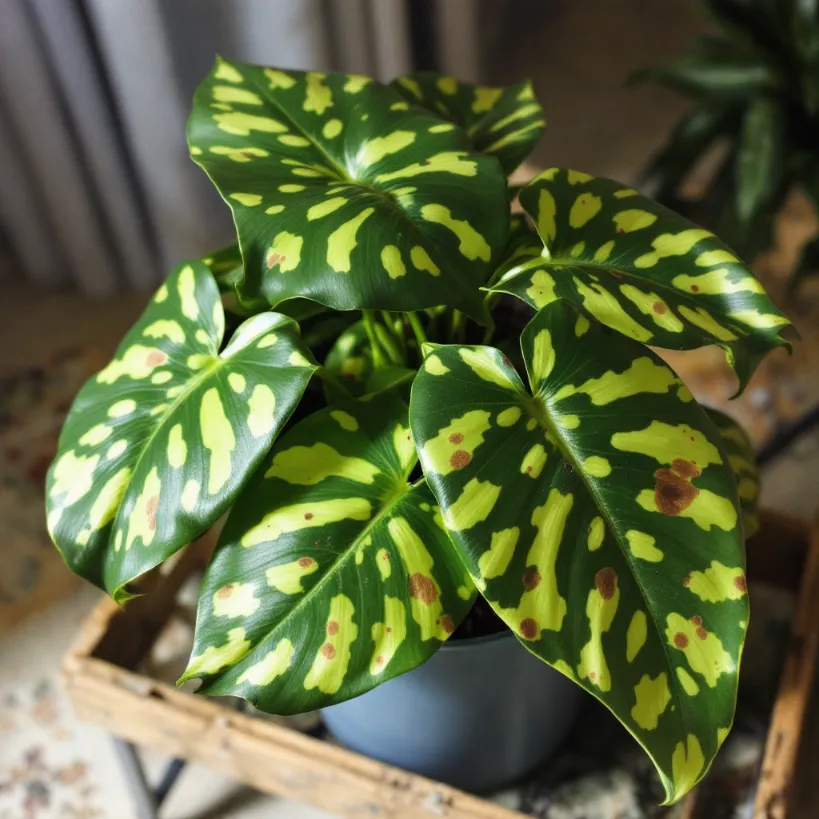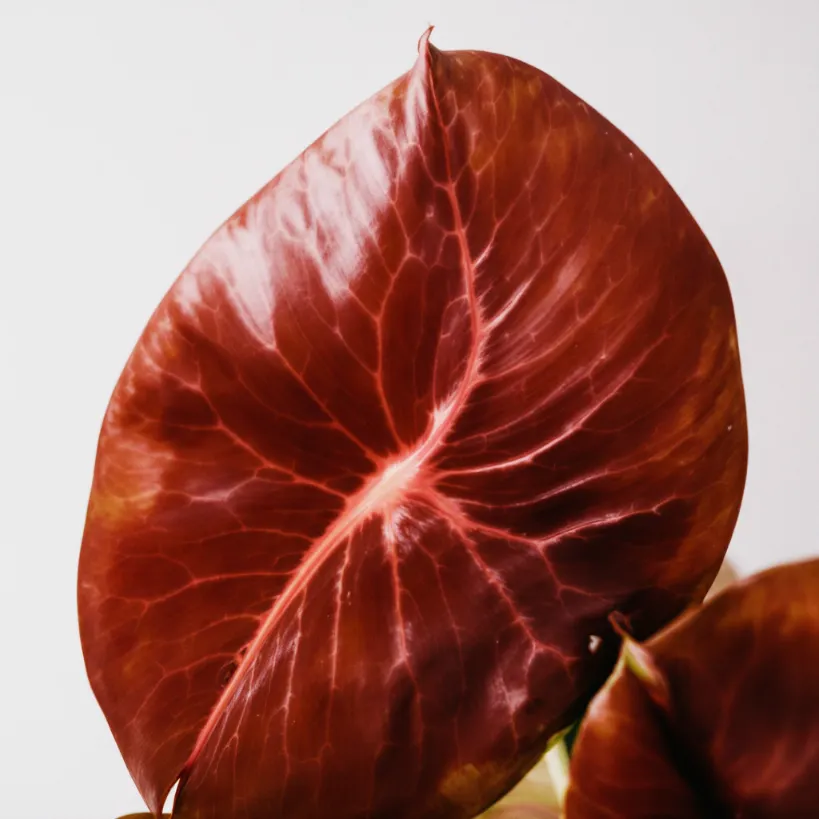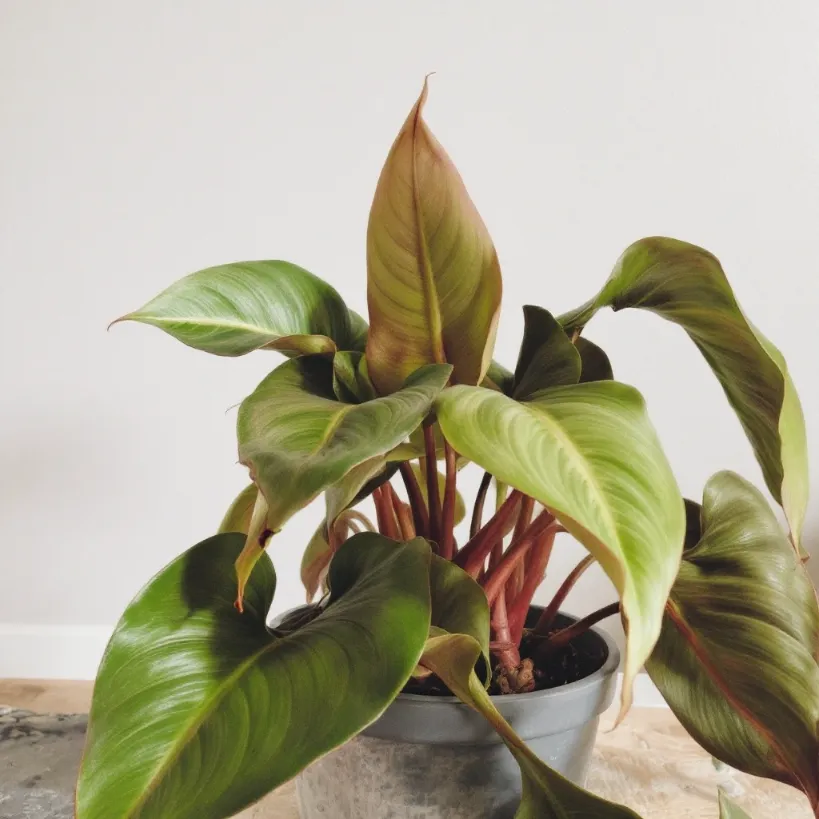Philodendrons—they’re everywhere. Green, lush… until they’re not. You’ve got brown spots, edges, and tips. The whole damn plant looks like it’s ready to give up. Philodendron leaves turning brown is a common cry for help—and the plant isn’t whispering. It’s screaming.
Why is Philodendron Turning Brown?
It’s usually a sign of one of these screw-ups: too much water, not enough water, crap light, low humidity, or maybe some tiny bugs are having a feast. Sometimes, it’s just the plant getting old—like the rest of us.

Key Takeaways
Here’s the deal, quick and dirty:
-
Overwatering: Soggy soil means root rot. Roots rot, leaves turn brown. Simple.
-
Underwatering: Crispy edges? The plant’s thirsty. Give it a drink.
-
Low Humidity: Philodendrons like it steamy. Dry air makes them sad and brown.
-
Sunburn: Too much direct sun. It is like a bad sunburn. Leaves get scorched.
-
Pests or Disease: Check for tiny bugs or weird spots. Those are bad news.
-
Nutrient deficiency Leaves need food just like we do; when the soil is bad, your plant will let you know!
The Usual Suspects: Causes of Brown Leaves on Philodendron

Let’s dig into this mess, shall we? Causes of brown leaves on philodendrons aren’t some big mystery.
Overwatering: The Slow, Soggy Death
Most people kill their plants with kindness. Too much water. Overwatering philodendron brown leaves is a classic.
If you are not sure about the watering needs of philodendrons, you can check this article.
The soil gets waterlogged, and the roots can’t breathe. They rot. Then you see root-rot philodendron brown leaves.
Underwatering: The Desert Within
On the flip side, some folks forget their plants are alive. Underwatering philodendron brown leaves leads to dry, crispy edges. Philodendron brown leaf edges are a sign you’ve been neglecting your duties.
Humidity: It’s Not Just About the Water
Philodendrons are tropical. They like humidity. Think jungle, not desert. Low-humidity philodendron brown leaves appear when the air is too dry.
Light: Too Much, Too Little, It’s a Mess
These plants are picky. Not enough light, and they get weak. Too much direct sun, and you get sunburn philodendron brown leaves. Philodendron light requirements are all about balance. Check your philodendron ideal lighting here
Fertilizer: Food or Poison?
Too much fertilizer can burn the roots. Fertilizer burns philodendron brown leaves look like they’ve been scorched. Not enough, and they get weak and pale. For a great care guide, read more about Lemon Lime Philodendron Care.
Pests: The Tiny Invaders
Aphids, mealybugs, spider mites—these little jerks suck the life out of your plant. Pest infestation: Philodendron brown leaves often have tiny spots or webbing. Get rid of them.
Disease: The Silent Killer
Fungal and bacterial infections, no fun. Disease infection: Philodendron brown leaves can have weird spots, rings, or a slimy texture.
Old Age: It Happens to the Best of Us
Sometimes, leaves just get old. Old-age philodendron brown leaves are usually at the bottom of the plant. It’s natural.
Other Culprits:
-
Nutrient deficiency philodendron brown leaves: The soil’s lacking something.
-
Hard water philodendron brown leaves: Too many minerals in your tap water.
-
Cold-damaged philodendron brown leaves: These plants hate the cold.
-
Chemical damage to philodendron brown leaves: cleaners, pesticides—keep them away.
Troubleshooting: Fixing the Brown Mess
Philodendron brown leaf solutions aren’t rocket science. It’s about paying attention.
-
Check the soil: Stick your finger in. Is it soggy? Dry? That tells you a lot.
-
Inspect the leaves: Look closely. Spots? Bugs? Webbing?
-
Consider the Light: Is it getting blasted by the sun? Hiding in a dark corner?
-
Think About Humidity: Dry air? Get a humidifier, or group your plants.
-
Review Your Watering: Are you a drowner or a forgetter? Adjust accordingly. Also, check this article.
-
Examine the Roots: If you suspect root rot, gently pull the plant out and look. Brown mushy roots are bad.
Philodendron Care Tips: Keeping it Green
-
Philodendron care tips for brown leaves: Prevention is key. Don’t let it get to this stage!
-
Healthy philodendron leaves: Come from good care, not luck.
-
Reviving philodendron brown leaves: Sometimes you can save them, sometimes you can’t.
-
Saving philodendron brown leaves: depends on how far gone they are.
-
Philodendron leaf care guide: Water right, give it good light, and keep the humidity up.
Getting Serious About the right care for Your Philodendron

Philodendron leaf problems and Philodendron health problems are often linked. A sick plant shows it in its leaves. Philodendron diseases and Philodendron pests are real.
-
Philodendron treatment: Depends on the problem. Could be as simple as less water.
-
Philodendron watering tips: Let the top inch of soil dry out.
-
Philodendron light requirements: Bright, indirect light is best.
-
Philodendron soil mix: well-draining.
-
Read more about how to prepare the perfect soil for a philodendron.
Specific Philodendron Problems.
Brown spots on philodendrons are a very common problem. Check this article for more information.
The philodendron turning yellow is another common issue. Here you have the perfect answer!
Propagation: Starting Over
Sometimes, the best thing is to take a cutting and start fresh.
If you have a Birkin, check how to propagate your philodendron Birkin here.
Philodendron propagation is easy. Cut a healthy stem and stick it in water or soil. You can discover the secrets of Philodendron propagation here.
The Long and Short of It
Fixing brown leaves on philodendron and preventing brown leaves on philodendron is about understanding the plant. It’s not a decoration—it’s a living thing. Treat it right, and it’ll look good. Screw it up, and you’ll have a brown, crispy mess. Also, check this article.
References:
[1] https://www.gardeningknowhow.com/houseplants/philodendron/brown-philodendron-leaves.htm
[2] https://gardening.stackexchange.com/questions/14949/why-is-my-philodendron-getting-these-brown-dry-parts-on-its-leaves
[3] https://greenka.uk/philodendron-care
[4] https://gardenerspath.com/plants/houseplants/philodendron-brown-leaves/
[5] https://www.houseplantjournal.com/houseplant-qa/brown-edges-on-philodendron/
[6] https://garden.org/frogs/view/59846/
[7] https://www.pennington.com/all-products/fertilizer/resources/how-to-save-brown-tipped-plants
[8] https://www.youtube.com/watch?v=CbwZmezuJqg
[9] https://www.plantsforallseasons.co.uk/blogs/philodendron-care/philodendron-problems-to-look-out-for-and-how-to-solve-them
[10] https://www.reddit.com/r/plantclinic/comments/mjfwte/whats_happening_to_my_philodendron_a_few_of_the/
[11] https://www.youtube.com/watch?v=-ZUnPtovKus
[12] https://www.reddit.com/r/plantclinic/comments/1d00mnj/philodendron_leaves_turning_brown/